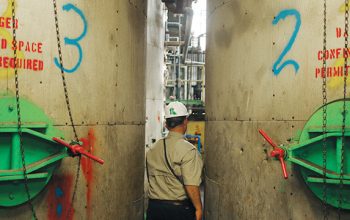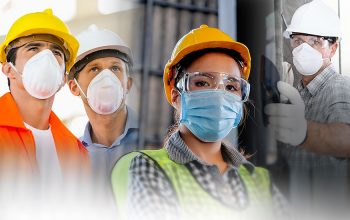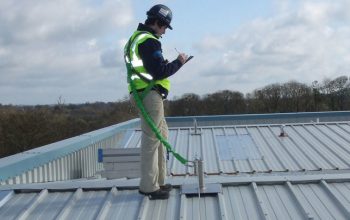How To Reduce Hazards Related To Welding?
Before starting a welding job, it is important to identify the hazards of that particular job. Hazards will depend on the type of weld, the materials (such as metals, bases, coatings, electrodes), and the environmental conditions, outdoors or in a confined or confined space.
Ask for Safety Data Sheets to identify the hazardous materials that are used in welding and cutting products , and the fumes that can be generated. Employees should know what they are going to weld before starting. Some fumes, such as those released when welding a cadmium surface, can be fatal in a short time.
After identifying the hazard, appropriate control methods can be implemented.
Engineering controls and work practices
Use less hazardous materials such as cadmium-free silver solder and asbestos-free electrodes, gloves, and pot holders.
Ventilation should be used to remove harmful gases and vapors. Local exhaust ventilation, which removes vapors and gases at the point of origin, is the most effective method. This can be provided by a partial enclosure, such as a ventilated workbench, or with hoods located as close as possible to the point of welding. Ventilation systems should be cleaned and maintained regularly. General ventilation uses roof vents, open doors and windows, ceiling fans, or floor fans to move air throughout the work area. This is not as efficient as local exhaust ventilation, and could simply scatter chemicals around the work area. However, general ventilation can help supplement local exhaust ventilation.
For arc welding processes with shielding gases, local exhaust can be provided by an extraction gun , which can reduce up to 70% the worker being exposed to welding emissions.
Hoods and ducts must be constructed of materials that are fire resistant.
Use barriers to protect others in the work area from light, heat, and splashes from the welding arc.
Welding booths should be painted with a matte finish that does not reflect ultraviolet light, such as finishes that contain titanium dioxide or zinc oxide.
Acoustic barriers between the worker and the noise source can be used to reduce noise levels. Another possibility would be to completely enclose the machinery or process.
Modify the process or follow safe work practices so that hazards are eliminated:
- Do not weld parts that have been painted or coated. If possible, remove all coating from surfaces before welding.
- Use a water table under the plasma arc to reduce vapor and noise levels.
- Grind the parts instead of cutting them with the air arc.
- Use the sub-arc process to minimize the light and fumes created by a visible arc.
- When welding or cutting, position yourself so that your head is not in the fumes.
- Remove all nearby flammable or combustible materials before lighting an arc or flame.
- Make sure all equipment is properly maintained, eg replace worn insulation and hoses.
- Welding areas must be kept free of equipment and machines that could cause a trip or fall.
- You can minimize the production of welding fumes by using the minimum acceptable amperage and positioning the electrode perpendicular to and as close as possible to the work surface.
- Arc welding should never be performed within 200 feet of solvents or degreasing equipment.
All electron beam welding processes must be enclosed and protected with lead or other suitable materials to prevent exposure to X-rays. All doors, portholes, and other openings must have appropriate seals and must be periodically inspected to prevent leaks. X-ray. Operators must wear plates to detect accidental exposure to radiation. The high voltages required also pose an electrical hazard.




